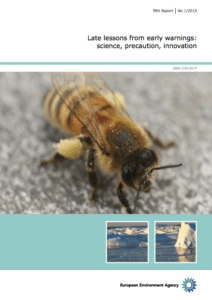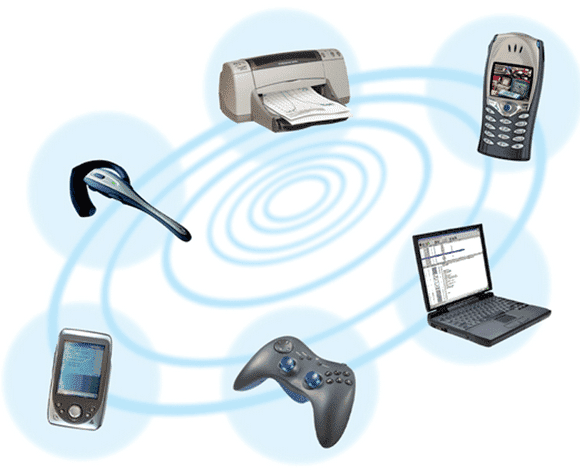While there is a tremendous and growing body of scientific evidence regarding the health effects of EMF radiation"Radiation" in the context of Electromagnetic Fields (EMF) refers to the process by which energy is emitted and transmitted through space or a material medium in the form of electromagnetic... More, there remains a great deal of uncertainty about which specific exposures will cause which specific diseases in which populations. So how can we best approach the question of creating safer and stronger EMF regulations? The precautionary principle presents a compelling alternative vision for how to view and manage the risk presented by our wireless devices.
Table of Contents
ToggleWhat Is Conclusive Proof?
When you deal with EMF issues, you’ll hear this phrase all the time. There’s no ‘conclusive proof’ or ‘definitive proof’ that EMF is harmful.
As just one example, the National Institute of Environmental Health Sciences (NIEHS) explains in their primer on the risks of cell phones:
Current scientific evidence has not conclusively linked cell phone use with any adverse health problems.
It is true that science has not conclusively linked cell phone use with health risks. For something to be conclusive, it must be incontrovertible. But what does that actually mean?
While it sounds cut-and-dry, the term ‘proof’ is actually a tricky one. And it has multiple meanings. In logic and math, for example, you can actually prove something. 1 + 1 = 2. That’s a provable statement. Definitively.

Want to Slash Your EMF Health Risks?
Good! Learn the one small change you should make right now.
But when you actually think about it, you’d be surprised at how few things in life can be definitively proven. For example, in a court of law, you don’t seek ‘definitive proof’. Instead, you seek proof ‘beyond a reasonable doubt’. And that’s why we sentence people to prison without definitive proof.
Just like there’s no concept of definitive proof in law, neither is there in science. In science, proof means “I’ve performed an experiment; here are the results; you and others can attempt to repeat and verify the work; here’s my theory to explain the observations.”
What’s more, scientific proof is often overturned by subsequent generations of scientists. This is how science grows and evolves, along with human understanding. But just because certain information does not constitute definitive proof, that does not mean that the information is inaccurate, misleading, or unreliable.
Taking Action Before There is ‘Definitive Proof’
What’s more, governments and regulators have repeatedly taken action in the absence of definitive proof, based on a preponderance of the evidence.
In the United States, for example, the 1966 Endangered Species Act applies a standard of evidence that is less than scientific proof, in order for the Fish and Wildlife Service to designate a species as endangered; after all, once we have definitive proof that a species is extinct, it’s too late to prevent extinction.

Going back a bit further in history, we can look to West Germany in the 1970s. At that time, their great forests were dying, and the lead culprit was industrial pollution.
Eventually, research studies would reveal the link between industrial pollution, acid rain, and deforestation. But at the time West German was facing devastating deforestation, those links were not yet conclusively proven.
Despite the lack of definitive proof, the country passed the Clean Air Act of 1974 to limit industrial emissions. And in doing so, the Germans adopted a new approach to countering environmental risks.
The German approach to environmental regulation since the historic passage of that act is known as Vorsorgeprinzip (literally, the ‘Precautionary Principle’).
What is the Precautionary Principle?
Both the 1966 Endangered Species Act in the US, and the West German Clear Air Act of 1974 are examples of what has become known as the Precautionary Principle.
The Precautionary Principle instructs us that, in the face of serious threats, a lack of scientific certainty never justifies inaction. As the United Nations-hosted 1992 Earth Summit explained in the Rio Declaration:
Where there are threats of serious or irreversible damage, lack of full scientific certainty shall not be used as a reason for postponing cost-effective measures to prevent environmental degradation.
The precautionary principle is defined by these key elements:
- Those in authority must anticipate harm before a harmful activity occurs.
- It is the responsibility of those doing an activity to show that the activity will not result in significant harm.
- Those in authority must act to introduce cost-effective control measures to prevent or minimize harm resulting from the activity, even in the absence of scientific certainty.
- The need for control measures increases with the degree of uncertainty and level of possible harm resulting from the activity.
The Precautionary Principle is an environmental policy designed to protect citizens from potentially adverse environmental influences, in the face of incomplete information about the risks these influences present. Per the principle, the estimated costs of immediate action must be compared with the estimated potential cost of inaction. If the potential cost of inaction is plausible, significant and irreversible, we should act.
In other words, the Precautionary Principle is how policy makers say what we all learned as children: “it’s better to be safe than sorry.”
Another expression of the precautionary principle comes from the 1998 Wingspread statement, which reads in part:
When an activity raises threats of harm to human health or the environment, precautionary measures should be taken even if some cause and effect relationships are not fully established scientifically. In this context the proponent of an activity, rather than the public, should bear the burden of proof.
Let that sink in. When the risks are so high, it should not be the burden of the public to prove definitive harm of an activity (or a product)– instead, it should be the responsibility of the maker of the product to prove that it is safe.
Take a moment to imagine if the Precautionary Principle had been applied to tobacco. How many lives would have been saved had the burden of proof been placed on the cigarette makers to prove that smoking was safe, when the first science emerged linking smoking to lung cancer and other diseases?
That is just one example discussed in Late Lessons from Early Warnings (first published in 2001, and updated in 2013), which analyzes the use, misuse and neglect of the precautionary principle at many different times in history. Late Lessons provides a guide to evaluating large and complex environmental threats, balancing the cost of inaction against the cost of action.

The Precautionary Principle & EMF Radiation
And so now we return to the question of EMF safety standards and regulation.
As one approaches the question of regulating EMF emissions and exposure, the Precautionary Principle can provide an instructive perspective.
Currently, the World Health Organization (WHO) advocates a ‘weight-of-evidence’ approach to evaluating EMF science.
The existence of biological effects and health hazards can only be established when research results are replicated in independent laboratories or supported by related studies. This is further strengthened when:
– there is agreement with accepted scientific principles
– the underlying mechanism is understood
– a dose-response relationship can be determined.
Instead of considering the long-term costs of the potential risks of EMF radiation, the WHO advises that safety standards should be based on definitive proof. This is the exact opposite of what the Precautionary Principle advises.
The science on the health risks of EMF is not incontrovertible. While the body of science in this area increasingly shows there to be a wide array of potential health hazards resulting from EMF exposures (from activities such as using your cell phone) there are other studies that demonstrate no adverse health effects.
But, while there is no ‘definitive proof’ that EMF causes brain tumors, for example, there is ‘very large, extremely serious and worrisome, scientifically accepted, peer-reviewed evidence’ that cell phone radiation is carcinogenic.
And yet, the proliferation of wireless devices and technologies continues to grow at an exponential rate.
Unfortunately, as Late Lessons from Early Warnings demonstrates, history shows us that it can take 30 to 100 years between the first “early warning” signs and the regulatory action taken to protect public health. This is because science takes time. As one regulator explained, “50 years must pass to determine whether an adverse event directly related to the use of cell phones would crop up in any individual.”
By the time we have conclusive proof, there may well be widespread and irreversible damage.
Applying the Precautionary Principle in Your Personal Life
So, you have a choice: do you want to wait half a century or longer for “conclusive evidence” to emerge to incontrovertibly prove the link between EMF exposures and negative health outcomes?
Or, based on the increasingly worrying evidence demonstrated by numerous scientific studies, do you want to take precautions and reduce your exposures to this force that the World Health Organization designates as a Class 2B Carcinogen?
Don’t be fooled by “conclusive proof”. It’s a canard used by the wireless industry to delay the creation of EMF safety standards that would make us safer, and harm their profits.
And this is why people should take action. Even before we have ‘definitive’ proof.

And while we wait for regulators to strengthen EMF safety standards, you do not need to wait to adopt the precautionary principle in your own life.
In fact, this principle forms the basis for all of the SYB Healthy Living Tips, which are all ways that you can have a safer relationship with your technology. And it’s why I always say, the best EMF protection is free.







